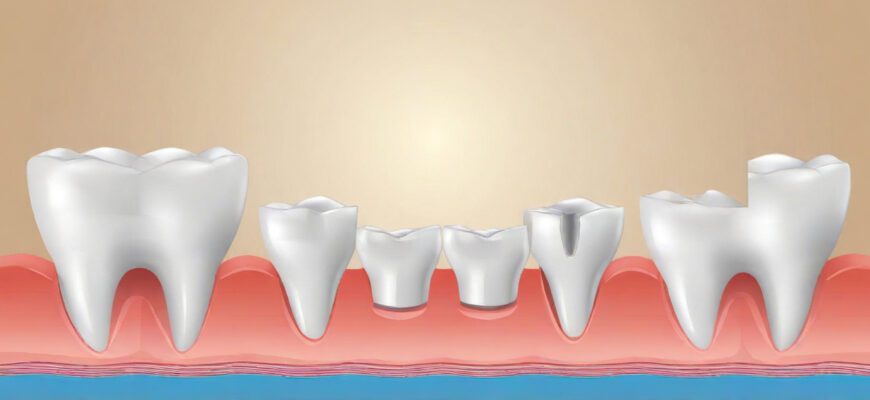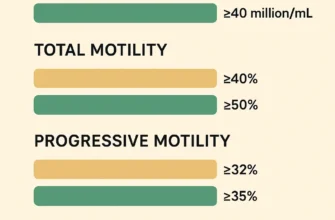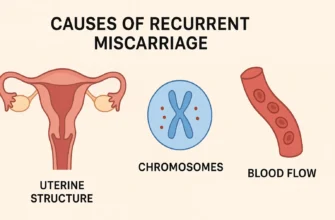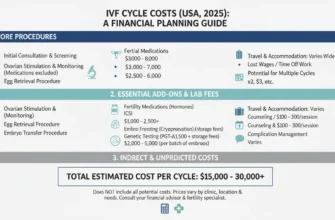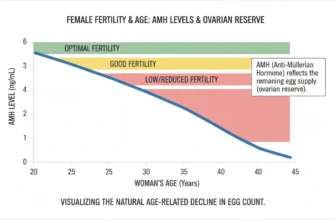Inlays, Onlays, and Crowns: A Comprehensive Guide to Dental Restorations
Dental restorations play a crucial role in preserving tooth function and aesthetics when damage or decay occurs. Among the various restoration options, inlays, onlays, and crowns represent different approaches based on the extent of tooth damage and clinical requirements. This comprehensive guide explores these restoration types, their indications, advantages, disadvantages, and factors to consider when making treatment decisions.
Understanding Dental Restorations: Definitions and Basic Differences
What Are Inlays, Onlays, and Crowns?
Inlays are custom-made restorations that fit within the cusps (raised points) of a tooth’s biting surface. They are placed inside the tooth structure when decay or damage is contained to the central portion of the tooth.
Onlays extend to cover one or more cusps of the tooth’s biting surface. Sometimes called “partial crowns,” they provide greater coverage than inlays while preserving more natural tooth structure than full crowns.
Crowns are artificial caps that completely cover the visible portion of a damaged tooth, extending from the gum line to the biting surface. They provide maximum protection by encapsulating the entire tooth structure.
The main structural difference is their coverage extent: inlays fit within cusps, onlays cover at least one cusp, and crowns encase the entire visible tooth.
Indications for Different Restoration Types
When Is an Inlay Appropriate?
Inlays are typically indicated when:
- Moderate decay exists within the cusps of the tooth
- The damage is too extensive for a standard filling but doesn’t compromise the cusps
- The patient desires a more durable and precise alternative to direct fillings
- Tooth-colored restorations are required in areas with moderate chewing forces
When Is an Onlay Appropriate?
Onlays are generally recommended when:
- Decay or damage extends to one or more cusps
- The tooth requires cusp protection but has sufficient healthy structure to avoid a full crown
- A more conservative approach than a crown is desired
- The patient has adequate enamel for bonding
When Is a Crown Necessary?
Crowns are typically indicated when:
- Extensive damage affects most of the tooth structure
- A tooth has undergone root canal treatment
- Multiple cusps are compromised or fractured
- Maximum protection is needed for a weakened tooth
- A tooth has significant aesthetic concerns requiring complete coverage
- Previous restorations have failed
Materials Used in Dental Restorations
All three restoration types can be fabricated from various materials:
- Porcelain/Ceramic: Provides excellent aesthetics and good durability, particularly suitable for visible teeth
- Composite Resin: Less expensive than porcelain but may not be as durable in the long term
- Gold: Exceptionally durable and requires minimal tooth reduction, still preferred by some dentists especially for posterior teeth
- Zirconia: Extremely strong material often used for crowns in areas of heavy function
- Porcelain-Fused-to-Metal (PFM): Combines strength with aesthetics, used primarily for crowns
Comparing Preservation of Tooth Structure
One of the most significant factors in choosing between these restorations is tooth structure preservation:
- Inlays: Highest conservation of tooth structure, requiring removal of only damaged tissue
- Onlays: Medium-high conservation, requiring more reduction than inlays but significantly less than crowns
- Crowns: Require substantial tooth reduction (67.5% to 75.6% of tooth structure), making them the least conservative option
Preserving natural tooth structure maintains the tooth’s inherent strength and provides more options if future restorations become necessary.
Is an Onlay Better Than a Crown?
Whether an onlay is better than a crown depends on multiple factors:
Arguments for Onlays:
- Preserves more natural tooth structure, supporting the principles of minimally invasive dentistry
- Can be equally effective at protecting cusps while being less destructive
- May allow for better future treatment options if the restoration fails
- Typically has supragingival margins, making them easier to clean and less likely to irritate gum tissue
Arguments for Crowns:
- More predictable outcomes, especially in patients with less-than-ideal oral hygiene
- Better protection against recurrent decay by covering the entire tooth
- May be more suitable for patients with bruxism or heavy bite forces
- Insurance coverage is often better for crowns than onlays
As one dentist noted, “I’ve started to feel like there’s no reason to choose an onlay over a crown” due to predictability concerns, while others maintain that “onlays are great” for the right cases.
Cost Comparisons: Inlay vs. Onlay vs. Crown
The cost differential between these restorations varies by location, materials, and provider:
- Inlays and Onlays: Typically range from €253 (approximately $275-300) to £215-£265 (approximately $270-330)
- Crowns: Generally cost around €298 (approximately $325-350)
In the United States, prices tend to be higher:
- CEREC onlays may cost between $600-$900
- Insurance-covered porcelain/ceramic onlays might cost around $410
- The differential between patient out-of-pocket costs can be significant when insurance coverage differs
Insurance Coverage and Financial Considerations
Why Many Insurance Plans Don’t Cover Onlays
Many insurance companies limit coverage for onlays due to:
- Least Expensive Alternative Treatment (LEAT) clause: Insurance companies may only cover the cost of what they deem the least expensive adequate treatment (often a filling instead of an onlay)
- Downgrading: Even when covered, onlays are frequently “downgraded” to fillings for reimbursement purposes. For example, an $800 onlay might be reimbursed as an $150 filling, with insurance paying only $120 (80%), leaving the patient with a $680 out-of-pocket expense
- Material differences: Some insurance plans only cover basic materials, not premium options like CEREC or e.max
This insurance situation creates a dilemma where the clinically preferable treatment (onlay) may be financially prohibitive compared to either a filling or a crown, which may have better coverage.
Advantages and Disadvantages of Each Restoration Type
Inlays
Advantages:
- Highly conservative of tooth structure
- More durable than direct fillings
- Excellent marginal fit and contact points
- Less polymerization shrinkage than direct composites
- Aesthetically pleasing with modern materials
Disadvantages:
- More expensive than fillings
- Requires multiple appointments (unless CAD/CAM is used)
- Some insurance plans offer limited or no coverage
- Technical complexity for dentists
Onlays
Advantages:
- More conservative than crowns
- Protects cusps from fracture
- Excellent aesthetics with modern materials
- Better longevity than large direct fillings
- Preserves healthy tooth structure
Disadvantages:
- Visual restrictions (variations in color or translucency)
- Higher price than fillings
- Potential temporary sensitivity after placement
- Risk of fracture under extreme forces
- Requires multiple appointments (without CAD/CAM)
- Limited insurance coverage
Crowns
Advantages:
- Maximum protection for compromised teeth
- Excellent predictability and longevity
- Comprehensive aesthetic solution
- Better insurance coverage
- Well-established procedures with predictable outcomes
Disadvantages:
- Requires significant tooth reduction
- More expensive than other options
- Potential for damage to pulp during preparation
- Replacement can be challenging if failure occurs
- May be unnecessary in cases where more conservative options would suffice
Longevity and Durability Considerations
Research indicates varying longevity for different restorations:
- Inlays and Onlays: Generally show “Good to Excellent” longevity, with many lasting 10-15 years with proper care, though some CEREC restorations may have shorter warranties (3-4 years)
- Crowns: Typically demonstrate “Excellent” longevity, often lasting 15+ years, making them the most durable option for severely damaged teeth
Factors affecting restoration longevity include material choice, occlusal forces, patient habits (bruxism), oral hygiene, and technique sensitivity during placement.
Technology Advancements in Restoration Fabrication
Modern dental technology has revolutionized how restorations are created:
CAD/CAM and Same-Day Restorations
CEREC and other CAD/CAM systems allow for single-appointment fabrication of inlays, onlays, and crowns, eliminating the need for temporary restorations and multiple visits.
Intraoral Scanning Accuracy
Recent research indicates that newer intraoral scanners provide better marginal fit for restorations. For example, CEREC Omnicam produced crowns with a marginal gap of 72.2 μm, inlays with 74.9 μm, and onlays with 96.4 μm, all superior to older scanner models.
The type of preparation affects scanning accuracy, with studies showing that smaller, less complex preparations (like inlays) tend to scan more accurately than larger, more complex ones (like onlays).
Special Clinical Considerations
Cracked Teeth
For cracked teeth, the decision between onlay and crown depends on:
- Crack location and extent
- Remaining tooth structure
- Functional demands on the tooth
- Likelihood of crack progression
While onlays may be sufficient for some cracked teeth, full coverage with a crown is often preferred for predictability, especially when cracks extend toward the root.
Bruxism and Heavy Occlusal Forces
Patients with bruxism present special challenges:
- Onlays may have higher failure rates in heavy grinders
- The margin between restoration and tooth on the occlusal surface creates a potential failure point
- Crowns may provide better distribution of occlusal forces
- Material selection becomes critical (e.g., zirconia or gold for maximum strength)
Treatment Planning with Core Buildups
When a tooth has a large existing filling:
- Some clinicians remove the old filling material, place a composite core, then prepare for the onlay
- Others remove the old filling and prepare the onlay to fill the entire space
- The decision depends on the remaining tooth structure and desired longevity
Trends in Conservative Dentistry
Modern dental philosophy increasingly emphasizes minimally invasive approaches:
- The conservation of tooth structure is considered paramount in contemporary dentistry
- Advances in adhesive technology have made bonded restorations like inlays and onlays more predictable
- Digital dentistry allows for more precise fabrication and fit of all restoration types
- Patient education about long-term tooth preservation versus immediate cost considerations is essential
Making the Right Choice
When deciding between inlays, onlays, and crowns, multiple factors must be considered:
- Extent of damage: The amount of healthy tooth structure remaining is perhaps the most critical factor
- Functional demands: Higher-stress areas may benefit from more coverage
- Aesthetics: Visible teeth may have different requirements than posterior teeth
- Patient factors: Age, oral hygiene, bite forces, and financial considerations
- Long-term prognosis: Balancing immediate conservation with long-term predictability
The ideal restoration preserves maximum tooth structure while providing adequate protection against future damage. While onlays represent a middle ground that is often clinically ideal, practical considerations like insurance coverage and predictability sometimes favor either more conservative (fillings) or more comprehensive (crowns) approaches.
The final decision should be made through careful consultation between dentist and patient, weighing clinical needs, long-term prognosis, financial considerations, and patient preferences to determine the optimal restoration choice for each unique situation.

